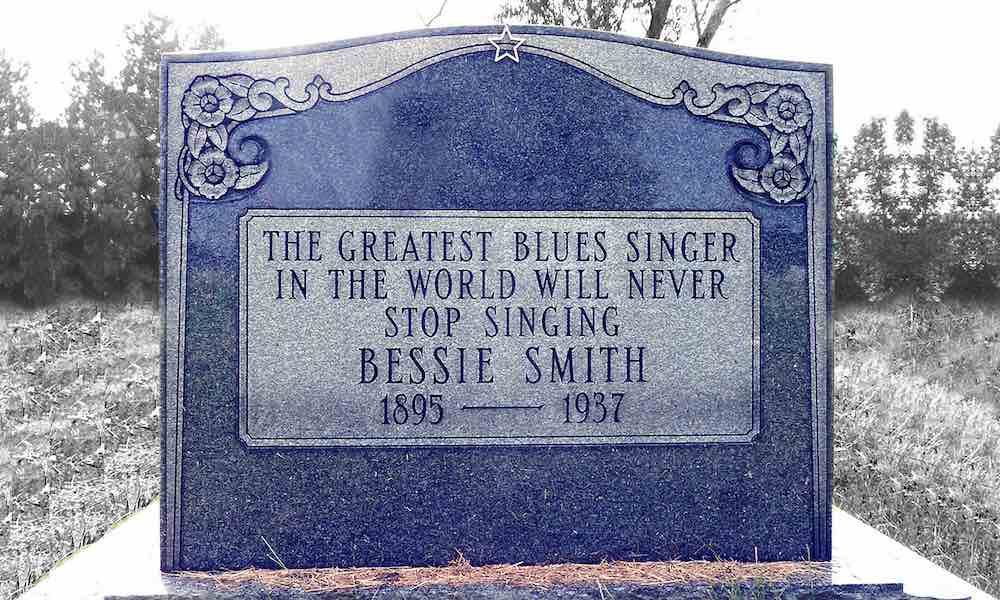Piece Of Her Heart: Janis Joplin Honors Blues Inspiration Bessie Smith
Near the end of her own tragically short life, Janis made a remarkable gesture to honor one of her blues heroines.

Towards the end of her life, Janis Joplin made a magnanimous gesture that confirmed her debt to an artist who was one of her greatest inspirations: the great blues singer Bessie Smith. On August 8, 1970, Joplin and Juanita Green — who had done housework for Smith as a child — paid for a proper headstone to be laid at Smith’s gravesite, which had remained unmarked since she was buried some 33 years earlier.
Joplin saw the equally outspoken and groundbreaking artist as such a role model that she sometimes told her friends she felt like Smith reincarnated. The tombstone at the gravesite, near Philadelphia, henceforth carried the epitaph “The Greatest Blues Singer in the World Will Never Stop Singing.” The touching, heartfelt words were chosen by Joplin and Green, who by this time was also the president of the North Philadelphia chapter of the NAACP.
Smith, fondly remembered as “The Empress of the Blues,” had died in 1937, her exact age unknown, although she was thought to be 43. She was killed in a road accident near Coahoma, Mississippi, and some 7,000 people were estimated to have attended her funeral.
‘This huge voice’
In an interview with Hit Parader magazine in 1969, Joplin explained just how influential Smith and other blues singers had been in the development of her own style. “Back in Port Arthur, I’d heard some Lead Belly records, and, well, if the blues syndrome is true, I guess it’s true about me,” she said. “So I began listening to blues and folk music. I bought Bessie Smith and Odetta records, and one night, I was at this party and I did an imitation of Odetta. I’d never sung before, and I came out with this huge voice.”
Joplin and Green’s gesture with the headstone moved the artist Dory Previn to write the song “Stone For Bessie Smith,” which she included on her 1971 album Mythical Kings and Iguanas, released some seven months later. Very poignantly, Joplin herself was not around to hear it: she died of a drug overdose at the age of 27, just two months after Bessie’s headstone was erected, in October 1970.
Listen to the Blues Classics playlist.













Wayne Nicholson
August 15, 2016 at 2:08 pm
I love the feeling in both Bessie`s and Janis`s voices and can hear what Janis got from Bessie.They will never stop singing.
David Edwards
August 8, 2019 at 5:10 pm
In the blues classics list Chuck Berry was never a blues man he was a rock and roller
Garvey Graystone
August 1, 2023 at 10:12 pm
Dr Smith’s story DOES NOT ring true!
Murder tortured tormented mutilated.
So many many inconsistencies.
New car
new resident
old thug
no Dr. bag
no flares
new direction
1:30am start
to go 600am fishing
an hr 1/2. away
fishing tackle in the back seat new car eel.
heard speeding car coming from miles away
no move my new car
Jump from the running board (onto the highway) and so much more.
Truck driver stops to chk his tires,
stops at the hospital to send help
but can’t, didn’t stop
to check on the welfare of human life.
How did Dr. Smith know and speak with definitive accuracy
of what happen with the truck and the processes leading up to the accident ?
Where are the police reports?
No Pictures.
Bessie Smith was TIME magazines 1923 women of the Year
yet her death is being treated like
she was just some local talent trying or close to success.
There is so much more however
there is just one more striking starling factor
I would like to list hear(re).
Where the hell is Richard Morgan’s account?
If racism didn’t kill Bessie
then ask yourself this
had it been Mary Pickford laying there
would Dr, Smith have sent his old thug 1/4 mile away knocking on doors for help or
would they have immediately rushed her to the nearest care facility ?
Vickianne Shepherd
April 15, 2024 at 12:28 pm
Mr. Graystone, where is Dr. Smith’s story you speak of and who was Dr. Smith? You list many details I have never heard of concerning Bessie’s death.